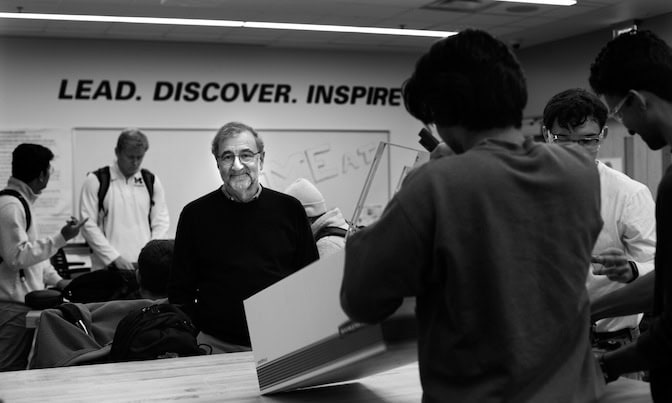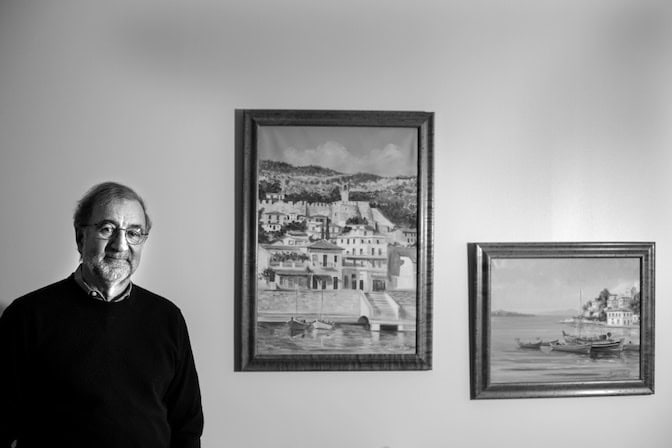
Establishing design science as an engineering discipline
NAE profile: Panos Papalambros, industrial, manufacturing & operational systems

NAE profile: Panos Papalambros, industrial, manufacturing & operational systems
Get to know Michigan Engineering’s National Academy of Engineering members.
For contributions to complex systems optimization and leadership in advancing transformative engineering design research and education, Papalambros was elected to the National Academy of Engineering in 2023. View the NAE citation.
More on Panos Papalambros

Papalambros: I was born and raised in Greece. Did my undergraduate studies there at the University at Deakin, University of Athens, and then I decided to come to the US. I ended up going to school at Stanford in California. I’m a mechanical engineer by training, but I was going to study some fluid mechanics. I ended up staying there and researching design optimization. But I also started teaching these courses in design that previously were taught like drafting. So I introduced the team-based design projects that now everybody assumes is the only way.
Papalambros: I had an idea to get the students organized in teams and have them propose some design project that would solve some problem that they had to document, and then work on through the semester, through a process that we established the design process where you come up with a proposal, solution, build prototypes and so forth.
I think that’s one thing that I’m pretty happy about because there was a lot of resistance at the beginning. Gradually, it became the norm throughout the college and the rest of the country and nobody would think of doing it otherwise today.
Papalambros: I would say to be really open minded. Many young people, when they start, they think they know what they want to do. Things happen sometimes. People do go exactly the way they planned them, but these are the very, very few exceptions. Most of us live in a world with very unexpected events. And there’s a lot of things we don’t know. So when you learn something new, you have to be open to see how you might take advantage of it, or work and learn from it.
And if you are not open to that, you’re going to miss a lot of opportunities in your life. At the same time, you don’t want to be all over the place. It requires a bit of discipline both to be focused and to be open.
Papalambros: On the academic side, the biggest challenge was that design within mechanical engineering has been seen as something that you do after you’ve worked in industry and you see how things are done. Only then you go back and tell the kids this is how it’s done.
But my view of design was that it’s an intellectual activity. It’s a technical activity. And so we need to study how we do it and develop ways to do it and study it the same way we study and do other disciplines. Design for me is really a rigorous academic discipline and we have ways of analyzing it, describing it and so forth, which are math based.
Quotes edited from interview transcript between Panos Papalambros and Marcin Szczcepanski.